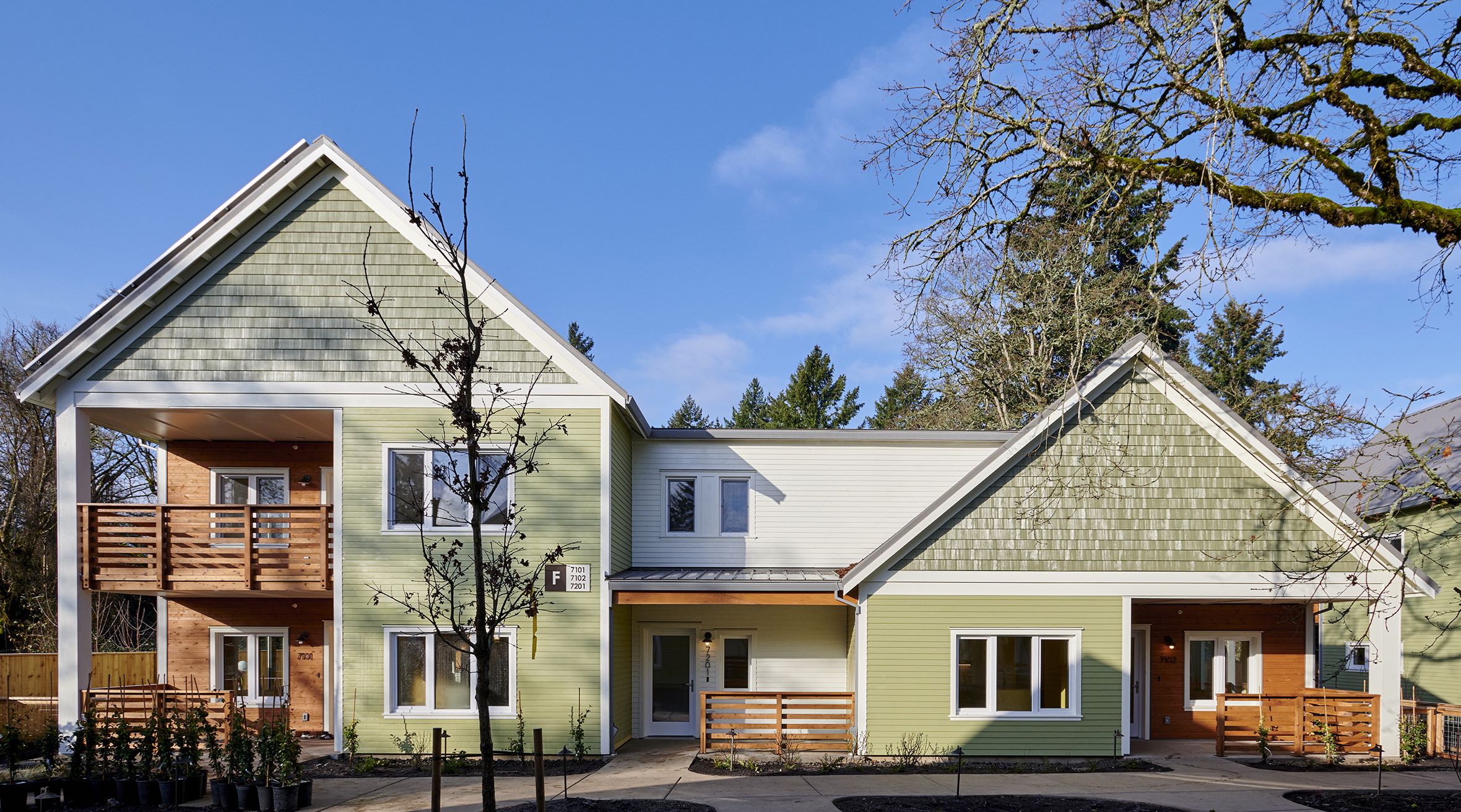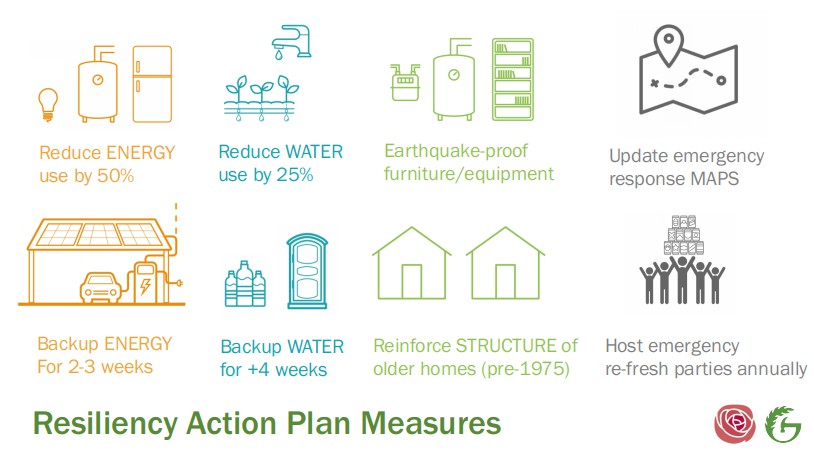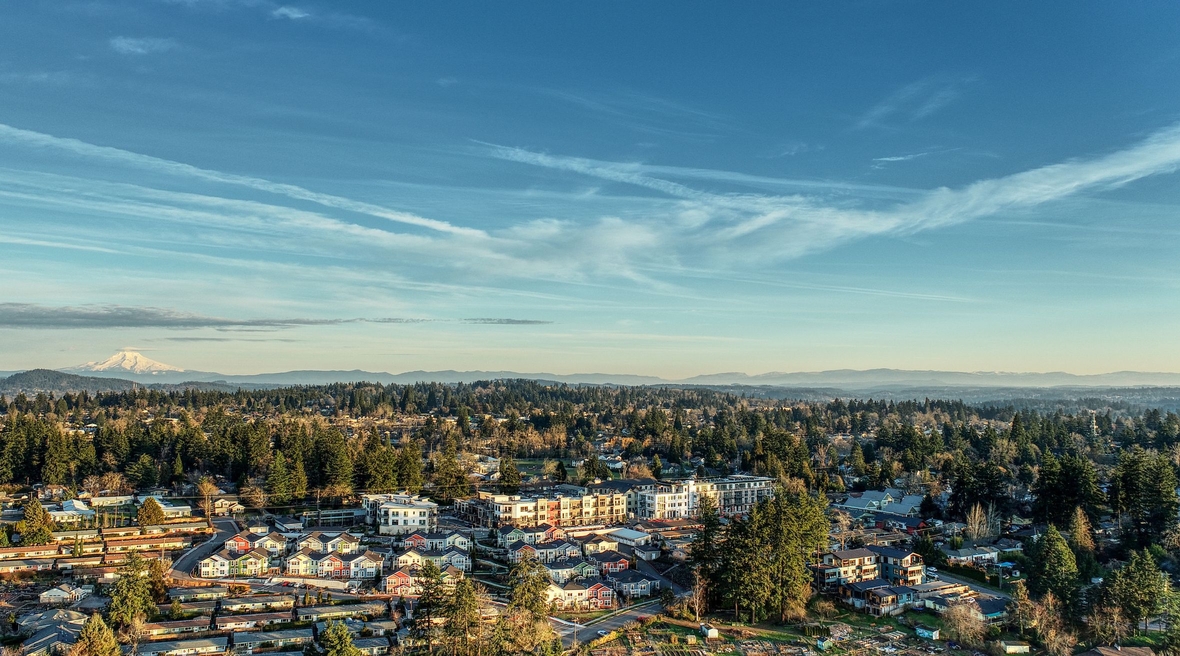Case Studies
Resiliency Action Planning at Rose Villa Senior Living
Background
Founded in 1960, Rose Villa is a continuing care retirement community (CCRC) on 22 acres overlooking the Willamette River in Portland, Oregon. Rose Villa’s mission is to support older adults to live the life of their own choosing, within and beyond its campus. Therefore, maintaining operations that facilitate safety, communication, transportation, and critical care of Rose Villa residents and staff is of the utmost priority. More than 400 people live, and more than 100 work, at Rose Villa.
In recent years, Rose Villa experienced many events that disrupted resident safety and campus operations, including several multi-day power outages due to severe storms and ongoing unhealthy air quality due to local wildfires in the summer. A global pandemic coupled with multi-day power outages, wildfires, ice storms, extreme heat events, and other severe weather due to climate change impacts Rose Villa’s ability to maintain safe, stable operations on campus. In addition, with a 37% chance that a 7.0 earthquake in our Cascadia Subduction Zone will occur in the next 50 years; the looming potential of a large Cascadia earthquake is impossible to ignore.
Recognizing these risks, Rose Villa decided to work with our team of consultants to create a resiliency action plan (RAP). The plan summarizes high-level recommendations to allow Rose Villa to anticipate, adapt to, and rapidly recover from a disruptive event.
The high-level recommendations developed in Phase 1 of Rose Villa’s RAP are now being analyzed more deeply in Phase 2 to create a realistic budget and timeline for implementation. This work will inform the development of Rose Villa’s Capital Improvement Plan, Facilities Maintenance Plan, Resilience Design Guidelines, and Emergency Response Plan.

The Oaks at Rose Villa was the first zero energy community for seniors in the Portland market.
Challenge
Large scope: There are many facets of resiliency that Rose Villa wished to address. We focused on energy, water and structural resilience in Phase 1. After digging in, we all agreed air quality was just as important.
Competing for time: It can be a full-time job to shepherd a planning effort such as this one forward. Leadership must be prepared to support staff if requiring their participation in resiliency planning.
Resident involvement: Rose Villa residents are highly motivated to understand and contribute to the RAP. Managing the expectations of residents is an important consideration. For example, implementing strategies might not happen as quickly as expected. We formed a resident working group of six residents that meet monthly. They are all passionate, knowledgeable and dedicated to the plan.
Evacuation may be inevitable. No matter how much Rose Villa invests in implementing its RAP, campus-wide operation independent of the grid is near impossible. After weeks of providing sheltering in place with off-grid energy and water supplies, evacuation may be inevitable to allow for rebuilding and remediation to occur safely and efficiently.
Approach
We kicked off Rose Villa’s RAP by leading key team members through a Visioning Workshop, where we defined resiliency for the organization, assessed potential disruptive events, and prioritized systems based on the severity of the risks. The team included their CEO, executive director, director of campus development, and director of strategic operations. We collaborated to set goals that were both aspirational and realistic. The scope of the RAP primarily included seismic, energy, water, and emergency response, but it also touched on air quality and fire resistance.
We then hosted several workshops focused on each of these specific areas. Again, we enlisted the help of experts, including PAE and Equilibrium Engineers. Throughout all Phase 1 discussions, it was apparent Rose Villa residents must play an integral role in selecting and refining the solutions set out in the RAP in the second phase.

Results
As of November 2022, we completed Phase 1 (discovery) of the Rose Villa RAP. The RAP has a 20-year timeline broken into five phases. Careful thought went into phasing Rose Villa’s RAP goals and identifying the synergistic relationships between proposed strategies so efforts and investments build on each other efficiently and logically.
We are now in Phase 2 of RAP planning, refining the strategies with a more detailed analysis of the associated costs. In addition, we are facilitating a monthly meeting with a resident working group to garner feedback and leverage their expertise and commitment to implement some of these resiliency strategies.
The goals set by Rose Villa in its RAP are ambitious. Yet they are achievable with proper investment of time and resources.
Resiliency measures go hand in hand with sustainability measures. Clients can reap the benefits of their resiliency measures every day through reduced operating costs, more comfortable indoor environments, and healthy indoor air quality. Leadership, staff, and residents feel good knowing they are part of a community that is leaving the planet a better place for their children and grandchildren.
Project Details
A comprehensive resiliency action plan summarizes high-level recommendations to allow Rose Villa to anticipate, adapt to, and rapidly recover from a disruptive event.
Project Partners
PAE
Equilibrium Engineers
